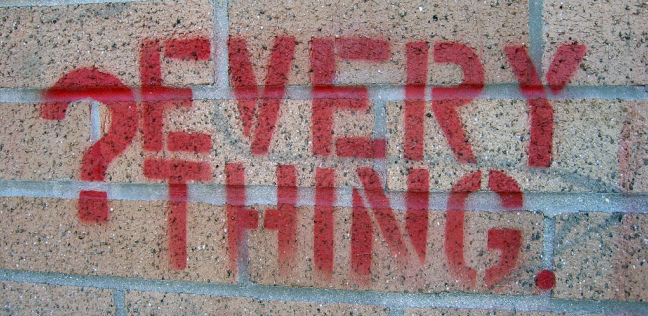
As many parents of anxious children would agree, your child’s anxiety can hit like a freight train. Their anxious thoughts can pop up fast, furious and suddenly – taking a calm child into the realm of a panic attack in seconds flat.
While a number of tactics and treatments can help address the deep-rooted cause of all these anxious thoughts, sometimes you need a quicker tool. That’s when the time comes to ask a single question that can help diffuse your child’s anxiety in a flash:
Is this really true?
This advice comes from current life coach and former anxious sixth-grader Renee Jain, who heard her sixth-grade teacher tell a student to use the question before the student blurted on the first answer that came into his head. But she found she could also use the question to derail the freight train of anxious thoughts that spiraled her own head into a panic.
“I now offer his advice to other children experiencing anxiety,” Jain writes in a PsychCentral blog post. “Every single time you have an anxious thought, ask yourself: ‘Is this really true?’”
Encouraging your child to question his or her own thoughts can be a highly effective way to derail the anxiety freight train and bring them back to reality.
Why the Question Works
Everybody’s head is constantly cluttered with all kinds of thoughts. Although thoughts are consistently popping up, they are just as consistently not true. Many of our thoughts are incredibly inaccurate, especially negative thoughts that breed anxiety.
So why do we continue to have them?
It’s human nature, part of our makeup from the early days when we had to be quick on our feet to survive. Early man’s tendency to exaggerate the potential for harm was one of the factors that ensured man would still be around in later days. This heightened sense of worrying about what could go wrong ensured man was acutely aware of his surroundings, an awareness that once meant the difference between life and death.
Even though we no longer have to stay on such high alert, our brains didn’t get the memo. Modern man continues the trend of exaggerated thoughts that tell us what could go wrong.
And these thoughts are powerful indeed. They can stir up emotions, trigger physical symptoms and even shape behaviors. Children anxious about school, for instance, may do everything they can to avoid it. Those worried about sharing the wrong answer in class may sit in the back and never raise their hand.
Those thoughts and behaviors can serve as stepping stones for additional behaviors that result in isolation, avoidance, sulking or even acting out. But halting the progression may be as easy as asking the single question: “Is it really true?”
Passing It On
Share the concept with your anxious child, asking him or her to pause, take a deep breath, and ask that question the next time they feel an anxious thought arise. They can even make a list of reasons the thought may or may not be true, to further illustrate it’s probably not.
Sources:
Photo Credit: El Negro Magnifico via Compfight cc





